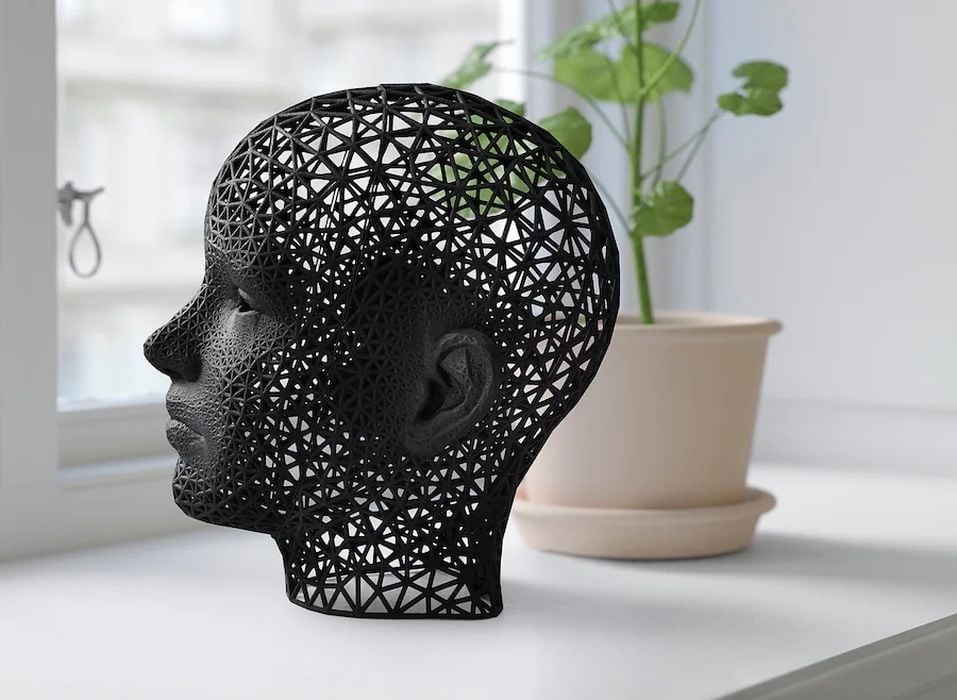
IKEA has quietly introduced a pair of 3D printed designs in their online store.
The specific products are under the IKEAname “FLAMTRÄD”, which when translated to English means “Flame Trees”. There are two products, one being a head sculpture, and the other being a pair of hands forming a heart shape, intended on wall mounting.

Both products are hollow and use a sparse lattice-style design, making them uniquely producible by 3D printing technology. IKEA does not say, but it’s very likely they have these made using the SLS 3D printing process. They explain in the product description:
“The airy shape in combination with the robust material creates an exciting contrast.
An object with this shape can only be produced with a 3-D printer. This means that each part is unique.”
I’m not so sure about that last statement, as each item is more than likely identical; it’s just that they are produced on demand.
That makes a great deal of sense, because these would be relatively expensive to produce using 3D printing in polyamide (nylon) material, and you wouldn’t want to pre-make more than would be sold. In fact, the item does not appear in the company’s physical stores at all, and can only be ordered online.
There’s one more curious thing about this development: the two 3D printed products appear only in the IKEA Germany store.

What does all this mean?
My suspicion is that IKEA is doing a small-scale test of the technology, the process and buyer interest. They’ve limited the project to a single region, likely to match the probably low initial demand and arrangements with a supplier to produce them on demand.
These decorative items would take hours to produce and post process, let alone shipping delays. It’s not something you’d mass produce.
The product name, FLAMTRÄD, makes sense because a “flame”, or laser, was used to create the objects using the SLS process.
The head is available in black or white material, and is priced at €50 (US$56). It’s 220 x 240 mm in size, not quite life size, but ideal to put on a desk.
The hands are smaller at 90 x 130 mm, and are priced lower at only €40 (US$45).

Both items are attractive and easily fit within IKEA’s standard design ethic. It’s likely that they will attract some attention by German buyers.
If that demand grows, it could be that IKEA would launch the products in other regions, or even develop additional 3D printed products for sale. The fact that it is not present in stores means the company has great flexibility in deployment to any region. They could even offer different 3D printed products in each region to match local interest.
This is not the first time IKEA has ventured into the world of 3D printing. Over ten years ago the company was using Objet technology to produce product prototypes. More recently, they partnered with UNYQ to produce a custom butt-fitted stool, launched a repository of 3D printable accessories, including a set of portable audio aids.
It seems to me that with all this experimentation, IKEA is learning a great deal about how to develop, market and sell 3D printed products. It may their long term goal to 3D print all their products, but that’s obviously not happening for a very long time.
Via IKEA Germany (Deutsche) (Hat tip to Benjamin)
